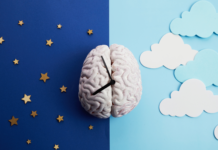
The Center for Environmental Therapeutics is dedicated to the promotion of non-pharmacologic, natural treatments, many of which are thought to act on our biological clocks. These treatments include bright light therapy, dark therapy, melatonin, and sleep deprivation (or wake therapy). Two other psychological treatments can also be included in this mix: interpersonal social rhythm therapy (IPSRT) and cognitive behavioral therapy for insomnia (CBT-I) —which target the timing of the sleep-wake cycle. Of all the conditions for which chronotherapy has been applied, bipolar disorders might be an especially rich intervention. They display striking rhythmicity, with the rise and fall of mood and energy as the illness courses between mania and depression. Diurnal variation in mood is prominent, with mornings typically dark and quicksand-like, over the the day yielding to brighter spirits and increased activation. Last, clinical and basic research demonstrate that individuals with bipolar disorders are unusually sensitive to changes in light exposure and timing. If there ever was a disorder designed to be susceptible to timing adjustments, it would be the oscillations of manic-depressive illness. But does the research support this hunch?
Two years ago, the Chronobiology and Chronotherapy Task Force of the International Society of Bipolar Disorders reviewed all the clinical studies done on each type of chronotherapy to determine its effectiveness and tolerability in the acute and maintenance treatment of bipolar depression and mania. The task force included 25 members from 15 countries. Six sections focused on each of the chronotherapeutic treatments: bright light therapy, sleep deprivation, dark therapy, melatonin, IPSRT, and cognitive behavioral therapy adapted for bipolar disorder (CBTI-BP). Information was extracted about study quality, potential bias, effectiveness, tolerability, potential for mood switch (to either depression or mania), and speed of response.
What did we find?
Bright light therapy had the strongest evidence base as an antidepressant for bipolar depression. Three randomized controlled trials demonstrated efficacy of this treatment along with several open-label studies. Sleep deprivation had the most studies, but only one was controlled. (Controlling for sleep deprivation is obviously difficult.) It was impossible to show “better-than-placebo” response; however, absolute response rates were approximately 60%. Dark therapy, which uses actual room darkness or blue-blocking glasses to produce “virtual darkness,” was the newest treatment method examined, with only three studies. However, two of the studies showed highly significant results, suggesting that dark therapy has great potential as an adjunct treatment for mania. Melatonin studies failed to show consistent benefit in either the acute or maintenance treatment of manic or depressed states. This failure may have been due to extreme differences in the doses and timing of melatonin administration. IPSRT was effective, both alone and as an adjunct to standard medication treatment, for bipolar depression, and for the prevention of both poles of the illness. IPSRT has yet to address the number of light patients receive during treatment, which may contribute in a variable manner. Finally, CBTI-BP had only one study showing efficacy in prevention of mania in euthymic bipolar subjects with insomnia. The table below shows the resulting treatment recommendations .
EVIDENCE-INFORMED PRACTICE RECOMMENDATIONS
| Acute phase | Maintenance/ prophylaxis | |||
| Chronotherapeutic treatments | Mania | Depression | Mania | Depression |
| Bright Light Therapy | ✗ | ✓ | ◎ | ◎ |
| Sleep Deprivation/Wake therapy | ✗ | ✓ | ◎ | ◎ |
| Dark Therapy | ✓ | ✗ | ◎ | ◎ |
| Melatonin or melatonergic agonists | ◎ | ◎ | ◎ | ◎ |
| IPSRT | ◎ | ✓ | ✓ | ✓ |
| CBTI‐BP | ◎ | ◎ | ✓ | ◎ |
Note
- ✓Recommended: The treatment is supported by literature review‐based evidence, which demonstrates efficacy, minimal safety risk, and positive tolerability.
- ◎ No Recommendation: Insufficient or conflicting data which does not permit recommendation at this time. This designation indicates neither endorsement nor rejection.
- ✗ Not Recommended: There is expert consensus that the treatment is contraindicated based on this literature review, along with other clinical, pre‐clinical, animal, and epidemiological studies.
The use of the chronotherapies to treat the different mood states of bipolar disorders is thus a work in progress. The evidence base varies greatly, as does study quality. Bright light therapy and dark therapy show great promise in the treatment of bipolar depression and mania, respectively. Melatonin results were mixed. Sleep deprivation appeared effective in many studies but lacked the support of randomized controlled clinical trials. IPSRT was effective alone and as an adjunct for bipolar depression and for prophylaxis. CBTI-BP has potential as an adjunct to prevent manic relapse.
John F. Gottlieb MD is Assistant Clinical Professor of Psychiatry at Northwestern University and Medical Director of Chicago Psychiatry Associates, and is exploring the efficacy of chronotherapeutics in bipolar disorder.





